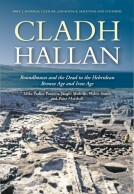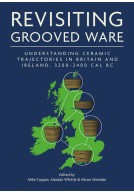Cladh Hallan (Hardback)
Roundhouses and the dead in the Hebridean Bronze Age and Iron Age, Part I: stratigraphy, spatial organisation and chronology
Imprint: Oxbow Books
Series: Sheffield Environmental and Archaeological Research Campaign in the Hebrides
Pages: 568
Illustrations: Colour
ISBN: 9781789256932
Published: 15th August 2021
Script Academic & Professional
Series: Sheffield Environmental and Archaeological Research Campaign in the Hebrides
Pages: 568
Illustrations: Colour
ISBN: 9781789256932
Published: 15th August 2021
Script Academic & Professional
You'll be £35.00 closer to your next £10.00 credit when you purchase Cladh Hallan. What's this?
+£4.99 UK Delivery or free UK delivery if order is over £40
(click here for international delivery rates)
Need a currency converter? Check XE.com for live rates
(click here for international delivery rates)
Need a currency converter? Check XE.com for live rates
This first of two volumes presents the archaeological evidence of a long sequence of settlement and funerary activity from the Beaker period (Early Bronze Age c. 2000 BC) to the Early Iron Age (c. 500 BC) at the unusually long-occupied site of Cladh Hallan on South Uist in the Western Isles of Scotland. Particular highlights of its sequence are a cremation burial ground and pyre site of the 18th–16th centuries BC and a row of three Late Bronze Age sunken-floored roundhouses constructed in the 10th century BC. Beneath these roundhouses, four inhumation graves contained skeletons, two of which were remains of composite collections of body parts with evidence for post-mortem soft tissue preservation prior to burial. They have proved to be the first evidence for mummification in Bronze Age Britain.
Cladh Hallan's remarkable stratigraphic sequence, preserved in the machair sand of South Uist, includes a unique 500-year sequence of roundhouse life in Late Bronze Age and Iron Age Britain. One of the most important results of the excavation has come from intensive environmental and micro-debris sampling of house floors and outdoor areas to recover patterns of discard and to interpret the spatial use of 15 domestic interiors from the Late Bronze Age to the Early Iron Age. From Cladh Hallan’s roundhouse floors we gain intimate insights into how daily life was organized within the house - where people cooked, ate, worked and slept. Such evidence rarely survives from prehistoric houses in Britain or Europe, and the results make a profound contribution to long-running debates about the sunwise organisation of roundhouse activities. Activity at Cladh Hallan ended with the construction and abandonment of two unusual double-roundhouses in the Early Iron Age. One appears to have been a smokery and steam room, and the other was used for metalworking.
Customers who bought this title also bought...
Other titles in the series...
Other titles in Oxbow Books...




















